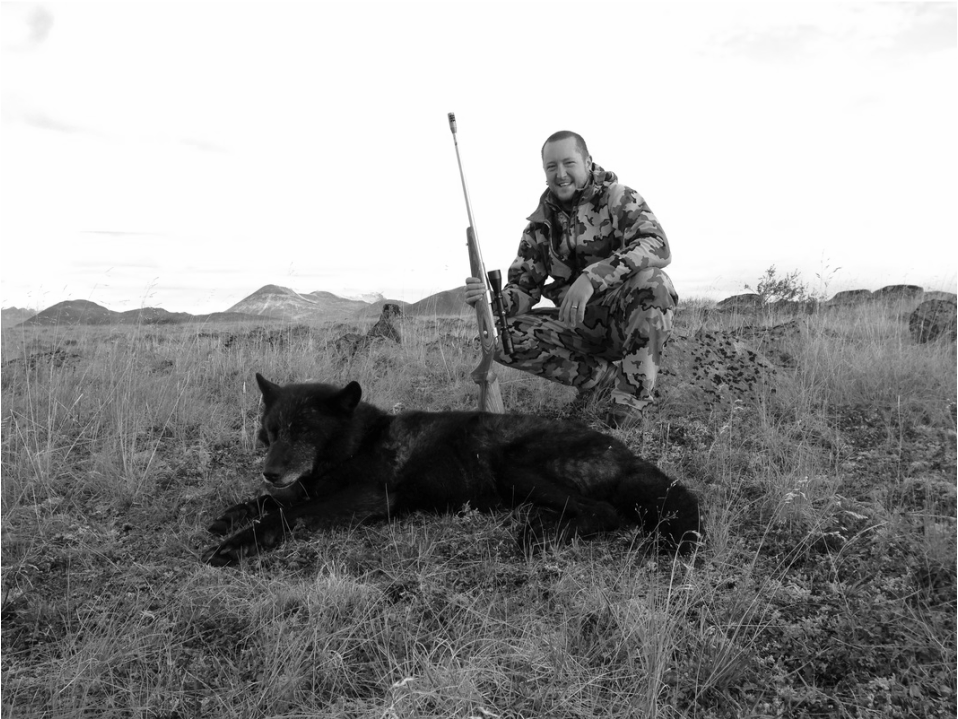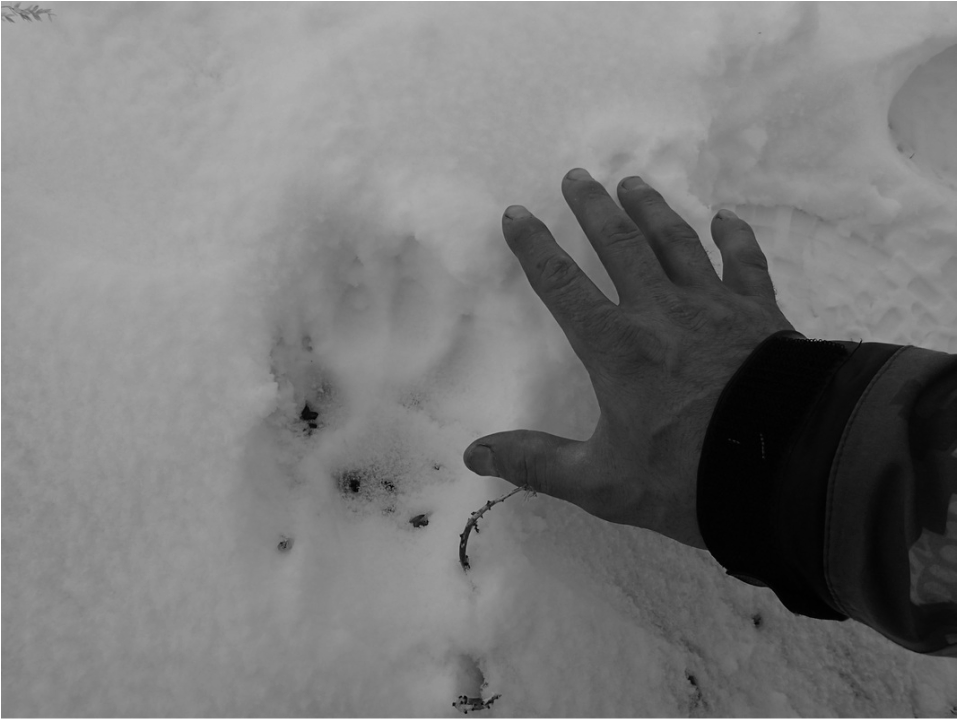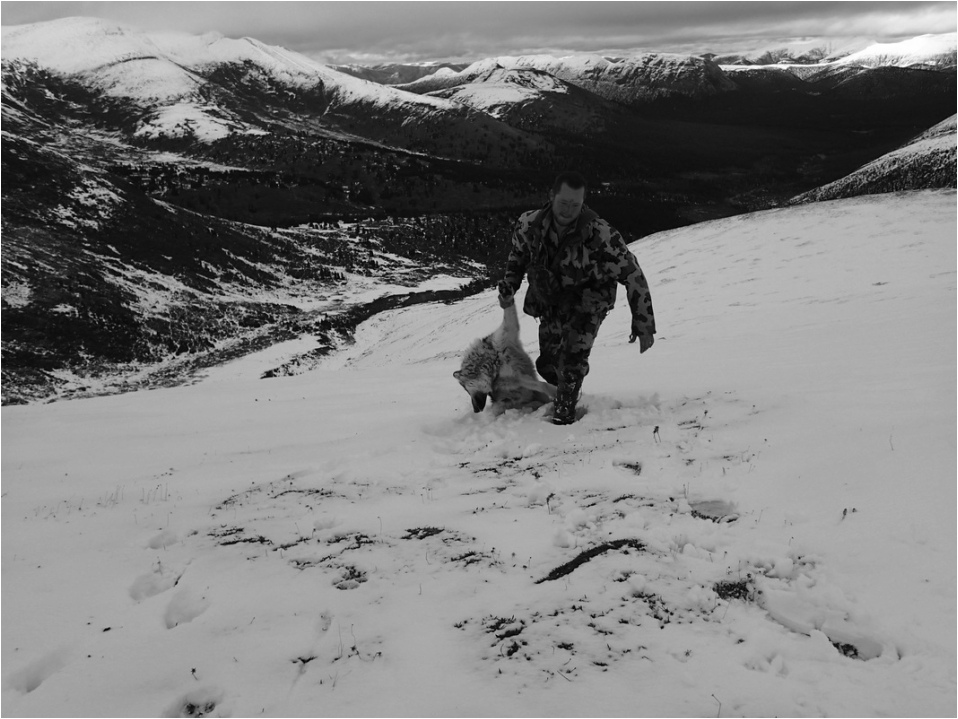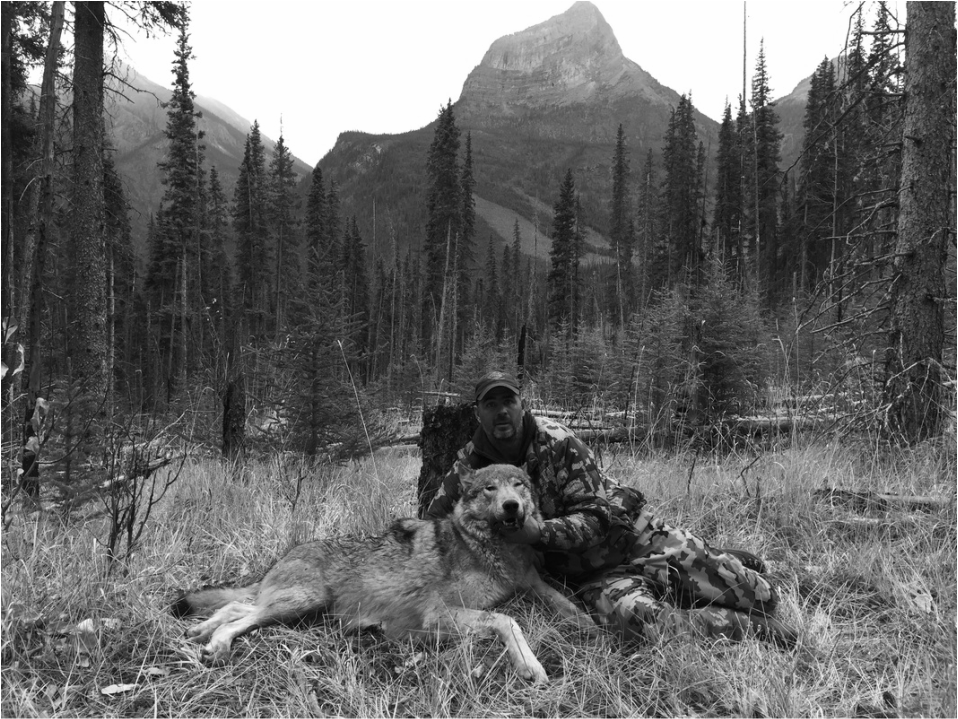Out of sight we belly crawled to the top of a four foot snow drift. There, ranged at 200 yards, lay a pack of seven wolves curled up in the snow. We had already eased a bullet into the chamber and our magazines were full. Jason and I couldn’t believe how well our plan had worked so far. Then like country legend Garth Brooks put it, the thunder rolled.
But we’ll come back to that. First let me tell you why I shoot wolves.
The more hunters I talk to these days the more I hear stories of wolf activity on their hunts and the more time I spend in the mountains and wilderness the more wolves and wolf sign I see. Fifteen years ago, seeing or shooting a wolf was relatively uncommon for the average hunter. Nowadays more often than not the report you get from a fellow hunter coming out of the bush is about how much wolf sign they saw and how little game the area held. As hunters we are not doing our part.
Recently, a hunting friend told me how they had come across two separate wolves on their annual moose trip this year. When I asked to see the pictures of the dead wolves he told me there weren’t any. I asked if they’d missed…wolves are well known for their elusiveness after all. Disappointingly, they didn’t even take a shot. When I asked what happened, he explained that the wolves had stood there 100 yards away, affording an easy shot, but they decided that shooting the wolf might scare away any moose in the area, and that the wolf would be a waste of time to deal with. I couldn’t believe it! Did they not think the wolf might be having an impact on the game by leaving him standing there?
Here in British Columbia, we have a very liberal season on wolves because by all accounts wolf populations (and predators in general) are at an all-time high. But for many hunters the idea of shooting a wolf or other predator that is not a “meat first” kill is unappealing. Even if that’s just due to the time required to deal with the pelt. Most people are meat hunters. I get that. But there are plenty of reasons to hunt wolves. An average late September wolf pelt skinned out and salted will easily fetch between $200 and $500 dollars. Most taxidermists will take them whole and probably give you something in return if you can’t be bothered to skin it. Not to mention the game you will save in your “secret” area by eliminating one voraciously predatory mouth from the food chain. On average one adult wolf will eat twenty adult deer sized animals per year or five moose sized animals. But as has been well documented wolves don’t necessarily target adults only. The young, the sick, the rut fatigued bulls and does and cows slowed in the final stages of carrying their young are all fair game and in many cases the more desired prey for an efficient pack. They have no bag limits on what they kill. Multiply this by a pack of seven and the numbers are downright alarming.
There’s no question however, wolves are part of the natural ecosystem. We need them, they keep populations balanced. This is a sentiment often heard from both anti-hunters and hunters that profess to be pure “meat hunters” and against predator control. And this is true in a purely untouched world but we have other factors in play. Unfortunately man has forever impacted the lands we hunt and in so doing given the wolves an advantage. Roads, trails, cut blocks, packed skidoo tracks, all of these things help wolves cover more ground and hunt more successfully than they normally could. Thus they have more food, and produce more offspring. This upsets the balance and we are left with less game. Wolves have always been admired for their ability to cover ground and with these human alterations to their environment they are able to cover even more ground in even less time.
As a single hunter and trapper I know I won’t make much of a dent in the wolf population. Some believe the wolf population here in BC could sustain a harvest rate of 25% annually. This would just keep the numbers at current levels not reduce them. In the past poisoning and aerial shooting were deployed to keep the numbers down, although this hasn’t been done for years in BC. But unless something is done, wolf numbers will continue to grow exponentially. Those are the only two feasible ways to control the wolf population and poisoning is not selective enough and unfortunately often results in other animals ingesting the poison. Aerial shooting is the only truly selective way to combat their rising numbers. Imagine three to four times the wolf population in your area in ten years. Is this something you want?
I hope to sway a few minds by getting the word out there about what is happening here in BC. The problems in the US have been well documented but they are not alone. We are not dealing with a transplant and protection issue in British Columbia. Wolf numbers are on the rise and many would say out of control. If that course is not changed they will continue to rise until Nature resets as she always does and the wolves starve themselves out. But until then, hunters will be faced with crashing ungulate populations and shortened, closed or limited draw hunting seasons.
I returned from the mountains four weeks ago. We went into a new area 60 kilometers up the Prophet River on horseback, and every year I find myself saying the same thing: man that was the most wolf sign I have ever seen. They were literally chasing the horses through camp at night. We could hear the pack of a dozen or more wolves howling less than 200 yards from camp most nights and saw tracks in the morning to prove it. Fortunately, we did not lose any horses, though I think we were close, especially given they are hobbled each night to go out to feed.
So back to my original story…
Two years ago we were on our annual moose hunt. As we rode up the valley, fresh snow covered the ground. There were wolf tracks on our horse tracks from the day before. They must have smelled the gut pile of our downed moose. As we approached the kill site there were howls ringing in the valley from up the mountain. We stopped shy of the gut pile, maybe 700 yards. There we tied up the horses and got into shooting position.
Just two weeks before this trip, I howled in a lone black wolf from over a kilometer and shot him at 503 yards. I was hoping this same type of challenge howling would work but after 20 minutes of howling back-and-forth it didn’t sound like the wolves were coming any closer. We would have to try to get above the kill site and look down onto it. Maybe from there we would have a shot. So we rode around the valley keeping downwind of the wolves’ location and set up where we could see the kill site. By the sound of the howls it sounded as though the wolves had moved away from it. Looking through the spotting scopes from 800 yards away we saw a grizzly bear with her face buried in the gut pile filling up for winter. A reminder they were in the area as well.
After half an hour I gave up glassing for the wolves. Maybe they’d determined our howling wasn’t legitimate. I started glassing higher up, looking for sheep in the alpine when all of a sudden about three kilometers away I saw something moving in a snowy bowl way up a mountain. Fixing my spotting scope on the movement I zoomed in to find seven wolves bedded in the snow up top.
There were four of us there and I thought all three of the guys would jump at the opportunity to go after those wolves. Unfortunately I only had one volunteer to go with me, my friend Jason. We jumped on the horses and rode straight towards the wolf pack, weaving around the feeding grizzly by 200 yards. Luckily as we rode, some clouds rolled in and shielded us from the view of the wolves for most of our approach. We rode up the back of a ridge and tied up the horses to the last of the scrub trees. The boys watching from below radioed that we were good and the wolves were still in the position we glassed them in. Keeping out of sight and down wind, we climbed 300 yards up a pretty steep face and then scrambled up and over a fifteen foot cliff. On the top edge of the cliff was a snow drift, a perfect rest for our guns. We crawled into position and peeked over the top. There in front of us, between 130 and 350 yards way was the pack of seven wolves. There was one white wolf in the group I had picked out and Jason chose the closest one. But as usual, wolves have a sixth sense and they were onto us shortly after getting into position. One of the wolves started walking away…”Take ‘em!” I whispered, and our rifles started some barking of their own. I’ve never reloaded that much in my life!
When the smoke cleared, our ears were ringing from the thirty plus shots (we both were shooting with muzzle brakes unfortunately). A number of the wolves were down. I was out of bullets, and my eyebrow was feeling the cold trickle from a magnum kiss. I grabbed my binoculars and found another wolf running. Ranging him for Jason I called out the MOA, to which he made an adjustment on his NightForce scope and at 640 yards he dropped another one. Then I found another one and called out his location and range, he was around 900 yards away and moving fast. “Keep the lead in the air man!” I hollered, and then “You were about 30 feet behind him!” but after two more shots, that wolf got around the mountain and out of sight untouched. As we stood up and surveyed the snowy bowl we counted four dead. I thought I had hit another one to the left and sure enough looking over a snow drift found another dead wolf that had made it just out of sight. This was unheard of. Five wolves at once had to be some kind of record. I insisted we had to drag them all together for a picture or no one would believe us. Getting the opportunity to shoot one wolf like I had a few weeks before was rare enough, but five is just unbelievable. It had been quite a season of predator management! We skinned them out, which did take us a day, but it was a hunt I’ll never forget.
On our more recent trip I mentioned earlier where the wolves were chasing the horses through camp, Jason and I were sitting having lunch and a small fire as we like to do on these late season hunts. We heard some howling and knew there were some gut piles nearby. I asked Jason if he wanted to have a little ride up there and see if we couldn’t get a couple of those horse chasing bastards. He agreed and off we rode toward the howling through the forest. Not ten minutes later Jason, who was in the lead, jumped off his horse and grabbed out his rifle, he’d spotted a wolf. I held the horses and watched it all unfold. He took a rest on a branch, found an opening, and dropped him with one shot. This male was the biggest to date and actually makes it well into the record book.
Never in my life have I seen so much wolf sign in one valley. I was glad we put in the effort to do our part. I would recommend to all hunters that only shoot what they eat, if you’re not willing to help keep the population in check, at least write your local, Provincial or State governments and tell them something needs to be done before the damage is irreversible. We’re headed to a place game managers have never been before, there’s more infrastructure and landscape changes than I think anyone ever imagined.
Unless we as hunters stick up for our game, we will sit by and watch it disappear in front of our eyes.





